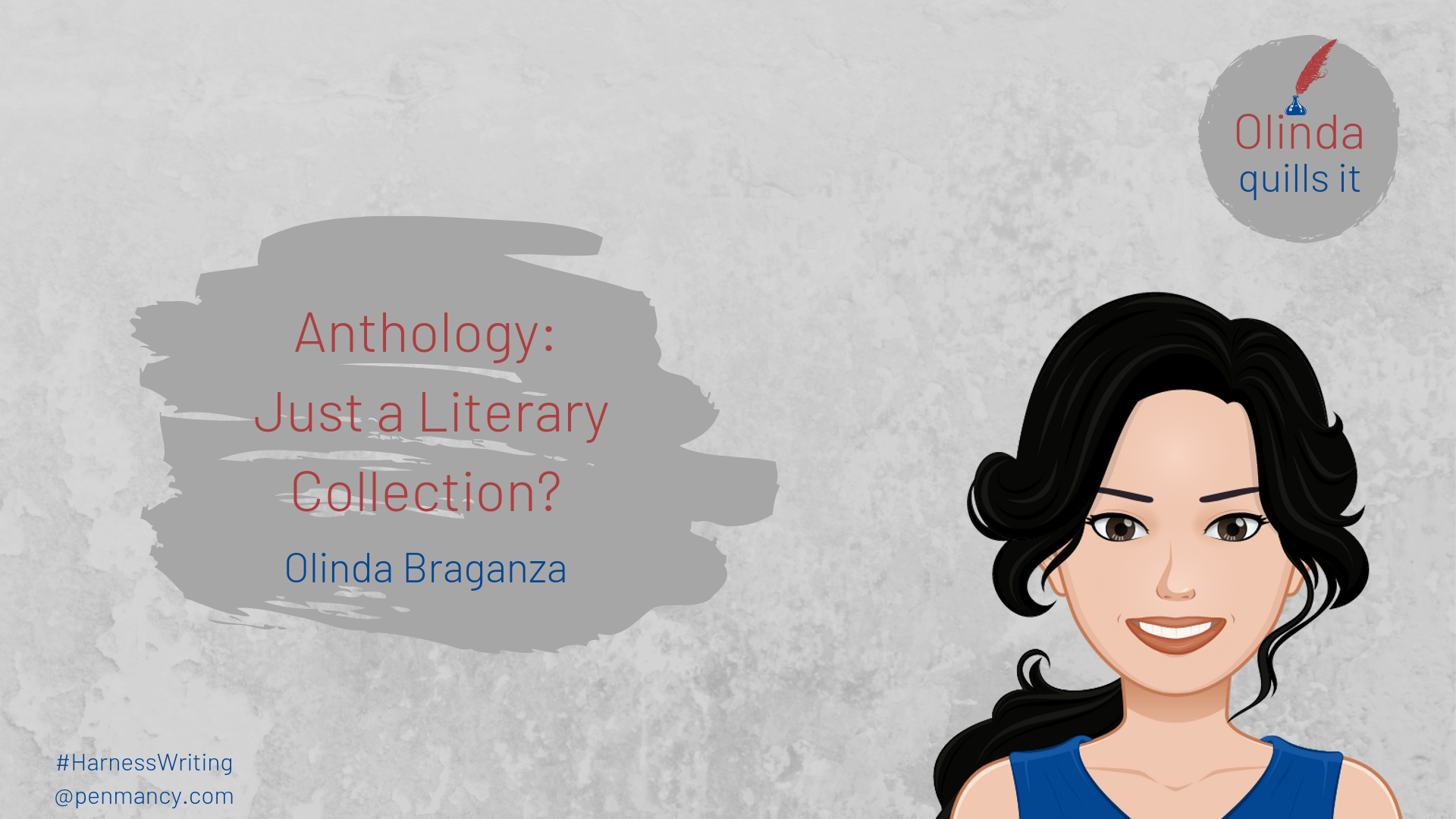
Ever since I was ten, I have harboured the ultimate dream – of becoming an author of a best-selling novel. Being an ardent reader (and still am!), my major inspirations namely Enid Blyton, Agatha Christie, R. L. Stine, J. K. Rowling, Rick Riordan (to name a few), have been instrumental in taking me closer to my goal, one literary step at a time… …and reveal a huge revelation along the way. In this day and age, unlike the past, everybody wants a bite of the literary cake. Which raises the bar and the competition, thus making it challenging to begin with a novellike bang. My hopes and confidence started to dwindle… …till I noticed a new approach among budding novelists, in the form of anthologies. I began to participate in contests, where the selected stories would get published in anthologies. Be it micro-fiction or short stories or poetry, there was room for everybody. I had won some and lost some, but in the end, I had bagged the wonderful opportunity to edit anthologies. According to my knowledge, anthologies were nothing but a simple collection of a similar form of short literary art pieces of only short stories, poetry or a mix of both. And, that was something that had given me an idea. What if, an anthology had the opportunity of being more? The first step for me was to read all the stories, which was a no-brainer, of course. Once I was done with reading them all, I had summarized each story to understand the underlying message that each story tried to impart. These were the easy tasks. But they were followed by the most difficult part. Arranging the stories in the desired order. But, I had a plan for that too. Once I had found the theme of the individual stories, it was easy for me to find a common theme that connected all the stories. And that made the next part quite enjoyable. I devised a narrative script that I broke down into different parts, with each part written between two stories and connecting them at the same time. One such example was for an anthology of a collection of short stories based on love, where I had connected the stories by presenting them as individual case files solved by love agents working for Cupid. The stories that had happy endings were successful cases, while the ones that didn’t were turning points in the overall narrative of the anthology. In a nutshell, the narrative was the line connecting the dots that were the individual stories in the anthology. And, once I was done, the end product gave me a great deal of satisfaction. Anthologies may be a collection of disconnected independent stories, but all I needed was an outline to connect them together. Be it case files or someone trying to change the world outside one story at a time, the stories became one and changed my world within! Because, it wasn’t just a collection. It was a novel story in itself! _____________ _____________
